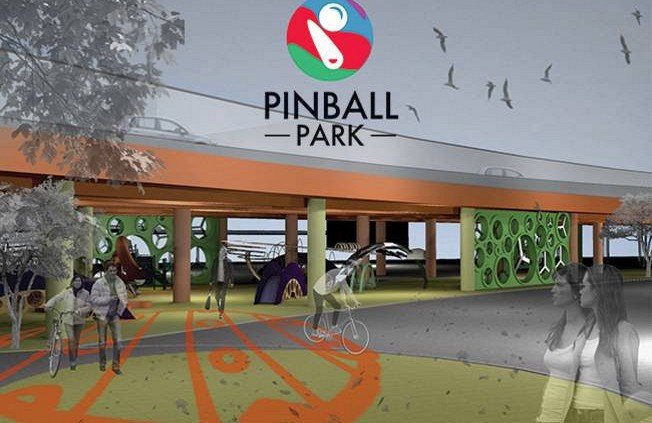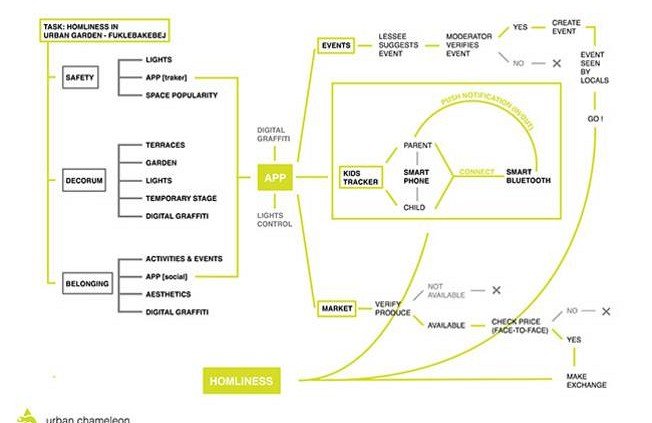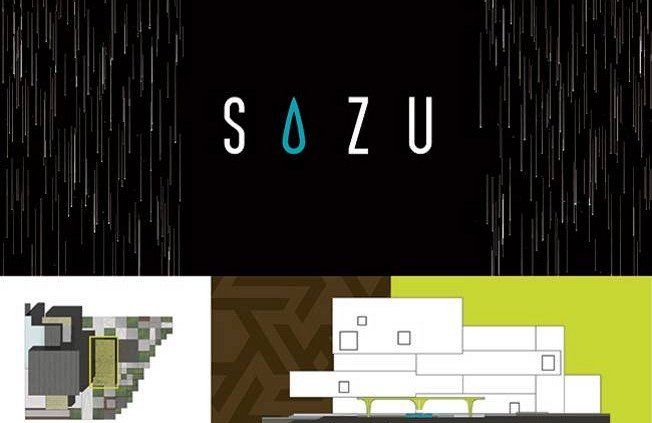An intense and rewarding charrette.
KEA Charrette 2014
At the annual KEA Charrette, 70 students from KEA and international partner institutions delved into an intense learning environment, challenging their intercultural and interdisciplinary skills. The one-week process required students to develop solutions to a real-life case.
KEA held its annual Charrette during week 42. Seventy students gathered for the event, including 60 international students from our various partner institutions around the world.
The students worked in groups on cases involving the urban renewal of four different sites. The cases were provided by Frederiksberg Municipality and Cobe Architects.
A challenging learning environment
The cases are taken from real-life projects, but the learning environment created in the Charrette is just as important in terms of preparing students for “reality”. The group work involves a learning environment that presents intercultural and interdisciplinary challenges. According to many of the participants, the interdisciplinary aspects of the project present the greatest challenges.
This setting reflects the reality that students will have to work in after completing their studies, as they can expect jobs that demand cooperation internationally and across professions.
The Charrette is an intense learning process that is both challenging and rewarding. Project manager Herman Bailey says:
“It inspires me to see how the students are already able to reflect on what they have learned during the week. They undergo an intense period of development, where they learn about themselves and their roles in such a context.”
Project background
Every month one thousand people move to Copenhagen, both from within Denmark and other parts of the world. This influx places increasing demands on the city’s infrastructure that, to some extent, is being addressed by projects such as the coming metro ‘City Ring’. In addition to this, the task of enabling local inhabitant as well as newcomers to feel at home in their surroundings is an ongoing challenge.
The demands of modern life require that we spend increasing amounts of time away from homes and more time in public/semipublic domains such as work environments. However, we still need time to ‘revitalize/recharge our batteries’, but ‘how’, ‘where’ and ‘when’ can we do this? Can we revitalise the locality whilst we revitalise ourselves?
A number of primary locations were identified in collaboration with 'Områdefornyelse Nordre Fasanvej Kvarteret' (part of Frederiksberg City Council) and also COBE Architects that formed the focus areas that were allocated to the interdisciplinary teams.
The teams of students worked together to develop a proposal for interactive digital solutions (that in some way was rooted in the physical environment) that facilitated engaging ways of ‘living in’ and ‘interacting with’ the locality.
In addition to this, the intention was to develop an urban intervention that worked together with the digital solution (buildings, spaces, and renovations) focused on encouraging a stronger sense of connection between individuals and their surroundings.

We don't want to go home
This learning journey captivates the students, who work intensely throughout the week. The only real cause of discontent during the Charrette was when KEA closed at 10.00pm every day. The students simply did not want to go home.
The Charrette is by no means a holiday week where international students have a chance to discover Copenhagen. It is hard work, all the time, according to project manager Herman Bailey:
“A mutual expectation is quickly established in the groups that they will strive to deliver an excellent result.”

High level of professionalism
The strong efforts by students are supported throughout the week by 40 advisors affiliated with the project. The advisors include experts from KEA’s own organisation, as well as international partners and corporate representatives.
The students were proud and relieved to present their inspiring proposals with a high level of professionalism on the last day of the Charrette. Then they headed home, taking with them greater personal insight as a result of the week’s activities.
According to Eva Valcke, head of KEA Global, this is also the project’s main objective for students:
“It’s great to see the strong professional development in the midst of the interdisciplinary and intercultural challenges. It is very intense.”
The ideas from the presentations will now be conveyed to the organisations that provided the cases, who can use the proposals as input for their own work on these assignments.

KEA Charrette 2014 Overview
9 Schools
Beuth Hochschule für Technik, Berlin, Germany
Centro Universitário Belas Artes de São Paulo, São Paulo, Brazil
Centro Universitário Senac, São Paulo,Brazil
Fontys University of ICT, Eindhoven, Holland
George Brown College, Toronto, Canada
KEA, Copenhagen, Denmark
London South Bank University, London, United Kingdom
Otis College of Art and Design, Los Angeles, CA, USA
Politecnico di Milano, Milan, Italy
8 Groups
Group 01: Mellemrummet
Group 02: Dx
Group 03: Urban Cameleon
Group 04: Bibidi Bobidi
Group 05: Mariendalsvej
Group 06: Trolde
Group 07: Thirsty Bees
Group 08: GROUP-8
67 Students
Architecture
Architectural Technology
Design Technology
Graphic Design
Multimedia Design
46 Expert Advisors
11 Jury members
Alan Engelhardt
(KEA, Copenhagen, Denmark)
Anneke Treffers
(Hogeschool van Amsterdam, Holland)
Darren Grosch
(Otis College of Art and Design, Los Angeles, CA, USA)
Prof. Denise Falcão Pessoa
(Centro Universitário Belas Artes, São Paulo, Brazil)
Prof. Elvira Pensa
(Politecnico di Milano, Milan, Italy)
Erik Heijligers
(Fontys University of ICT, Eindhoven, Holland)
Prof. Gisela Glass
(Beuth Hochschule fur Technik, Berlin, Germany)
Herman Bailey
(KEA, Copenhagen, Denmark)
Lori Endes
(George Brown College, Toronto, Canada)
Polise Moreira De Marchi
(Centro Universitário Senac, São Paulo,Brazil)
Prof. Ronald Kander
(Philadelphia University, Philadelphia, USA)
About the Author


